Opinion & Analysis
Does the Golf Ball Go Too Far?
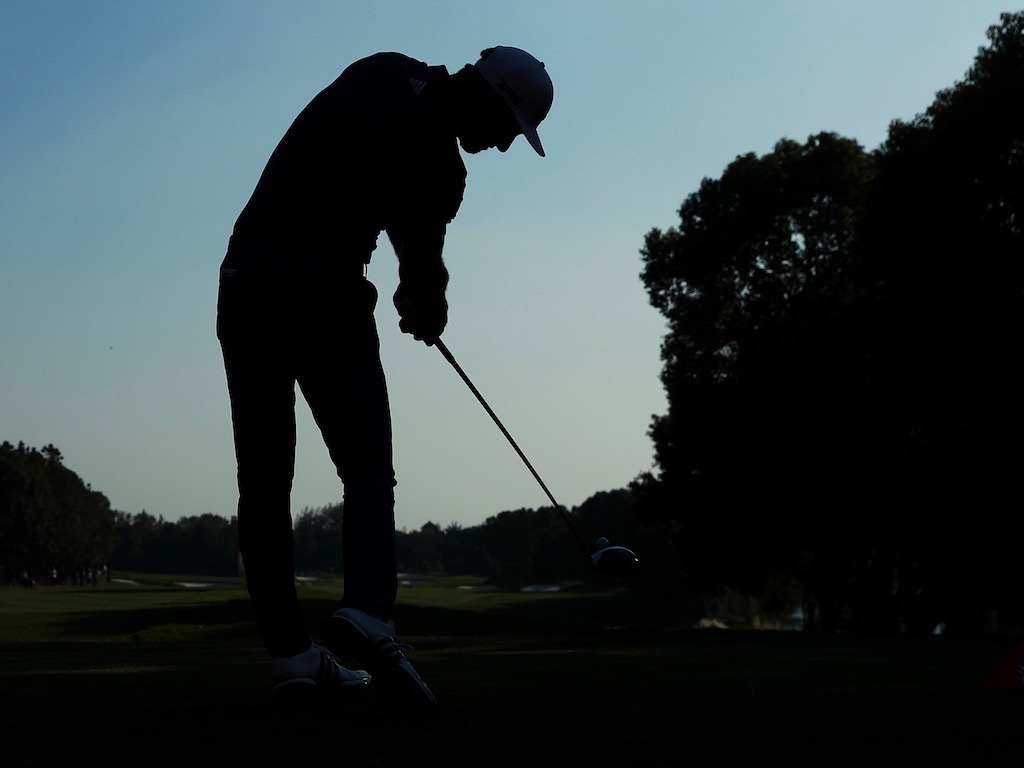
Recently we have heard everyone discussing whether or not PGA Tour players hit the golf ball too far. Everyone from Tiger Woods to Brad Faxon, Brandel Chamblee, Mike Davis, and Wally Uihlein have weighed in with their thoughts. I myself have struggled with what side of the fence I should be on, so I wanted to learn more about it before I made a judgement.
Because I am a golf nerd, I decided to do a little digging.
My first question in all of this is, what is too far? How do we judge that the golf ball or distance has reached a point where it is diminishing the product for our viewing pleasure? How do we know if technology and distance have effected the integrity of the game? Too far is a statement of relativity. One-hundred years ago, it could have taken you 12 hours to travel 200 miles. Now you can fly Los Angeles to Sydney in that same amount of time.
When Harry Vardon was winning championships early in his career, he and every other competitor exclusively used the gutta percha golf ball with his name on it, “The Vardon Flyer.” The gutta percha was invented in 1848 and used until a new ball came into play in the early 1900’s. This new ball was the Haskell Rubber ball invented by Coburn Haskell and Betrum Work. It was the first rubber ball that was a complete game changer. Despite is obvious performance enhancements and distance gained, however, many of the top players were slow to begin to play the new ball. In fact, it took Harry Vardon almost 10 years to make the switch. I can imagine they were having the same conversations back then that we are having today.
There are tons of examples of this throughout golf history, and although there have been limitations on technology there has never been a roll back in the golf ball. The ball has always won out. So I ask myself and you why now are we claiming that the ball is going too far? I decided to compare scoring average on the PGA Tour to driving distance and golf course length. Below in the graphs you will see what I found.
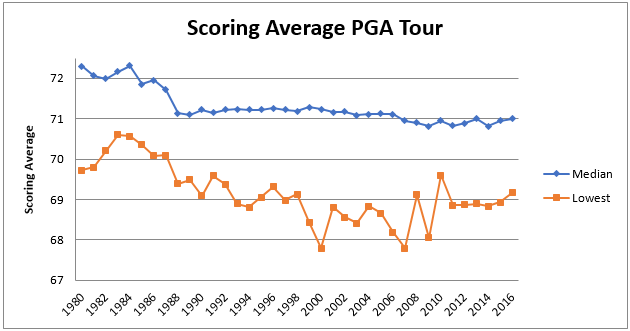
First, I must say it is very difficult to find accurate data on driving distance and scoring average before 1980. From 1980 to present time, this information has been tracked by the PGA Tour, so I decided to only look at the past 37 years for an example. Since 1980, the PGA Tour median scoring average has gone from 72.3 to 70.995 in 2016. That is a difference of 1.305 shots or a change of 1.8 percent over 37 years. The lowest scoring average on the PGA Tour has gone from 69.73 to 69.17. That is a difference of o.56 strokes or an 0.8 percent of change. So yes, scoring average has gotten better. Is this because the golf ball is going farther?
Let’s now look at driving distance on the PGA Tour since 1980 in the chart below.
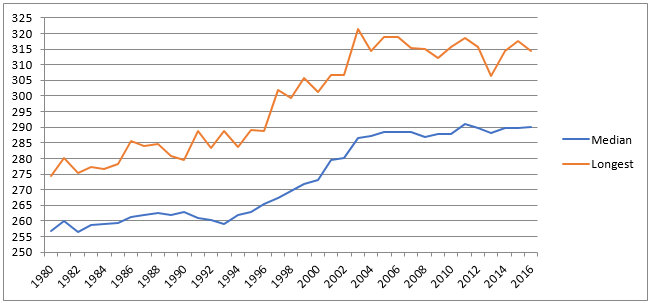
In 1980, the median driving distance on the PGA Tour was 256.7 yards. In 2016, it was 290.1 yards. That is a gain of 33.4 yards over 37 years, or about 1 yard per year. This is a percentage change of 13 percent. The longest hitter in 1980 averaged 274.3 yards. In 2016, the longest hitter averaged 314.5 yards, an improvement of 40.2 yards. That’s a percentage change of 14.6 percent. PGA Tour players in 2016 hit it a lot farther than they did in 1980, yet scoring averages haven’t changed much. Is this because golf course length has kept up with distance gained?
Finding course length information since 1980 was difficult. I decided to only look at the majors championships as examples, where data is more plentiful. From here, I made the decision to only use the U.S. Open and PGA Championship. Unlike the Masters, they are played on a different course every year. As for The Open Championship, it’s generally a different kind of golf where distance and strategy can hinge on the elements. I felt as though this was the best representation for all courses on the PGA Tour. In the chart below, you will find the average course length of the U.S. Open and PGA Championship from 1980-2016.
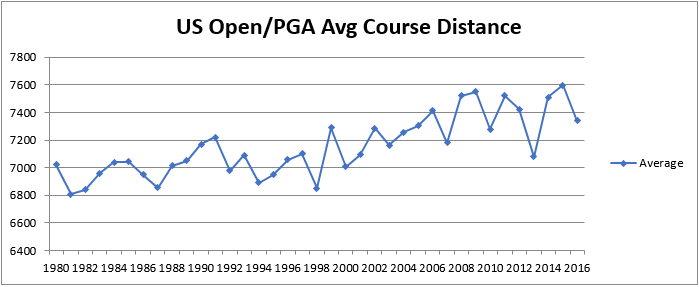
As you can see, golf courses have absolutely gotten longer. For this chart, I will compare the shortest average length (1981) to the longest average course length (2015). I am doing this because of the smaller data sample size and I believe this would more correctly illustrate the average of all PGA Tour courses. From 1981 to 2015 the golf course length increased by 791 yards (6807 yards to 7598 yards). That’s an increase of 11.6 percent.
For review, we have seen scoring average decrease by 1.8 percent, driving distance increase by 13 percent and course length increase by 11.6 percent. The difficult part about looking at this much data is always trying to interpret it. How is the data helpful, and what story does it tell?
Let’s revisit the driving distance chart one more time with some timeline reference points to paint the picture in a clearer way. These are some of the biggest technological advances in golf since 1980, and they tell a fantastic story of why we saw certain leaps in distance over a short amount of time.
- From 1991 to 2000, the decade of the introduction of bigger metal woods from the 190-cubic-centimeter Big Bertha to the 300-cubic-centimeter Titleist 975D, there was median distance increase of 4.7 percent (12.3 yards).
- Just in the year from 2000–2001, which saw the solid-core Titleist Pro V1 introduced in October of 2000, there was a median distance increase in 2.3 percent (6.3 yards).
- From 2002–2003 (TaylorMade introduced the adjustable-weight R7 driver on Tour in 2004), there was a median distance increase of 2.4 percent (6.6 yards).
In just 4 short years (2000–2003), the median distance on the PGA Tour increased by a whopping 4.9 percent (13.4 yards). Of course, there was a necessary and actionable reaction to this by the USGA when it limited the driver to 460 cubic centimeters following the 2003 season and finalized the COR limit. Since 2003, we have only seen a change in median distance of 1.2 percent, or 3.5 yards. I believe this gain in distance can be explained by better fitting and the presence of launch monitors like TrackMan on tour. There has also been more adjustability added to drivers and several upgrades in shaft technology.
What I don’t understand when looking at this data is why are we just now saying the golf ball is going too far. It seems to me we are 15 years too late in noticing.
- LIKE215
- LEGIT25
- WOW12
- LOL8
- IDHT2
- FLOP5
- OB2
- SHANK20
19th Hole
Vincenzi’s 2024 Masters betting preview: Niemann to play star role at Augusta National
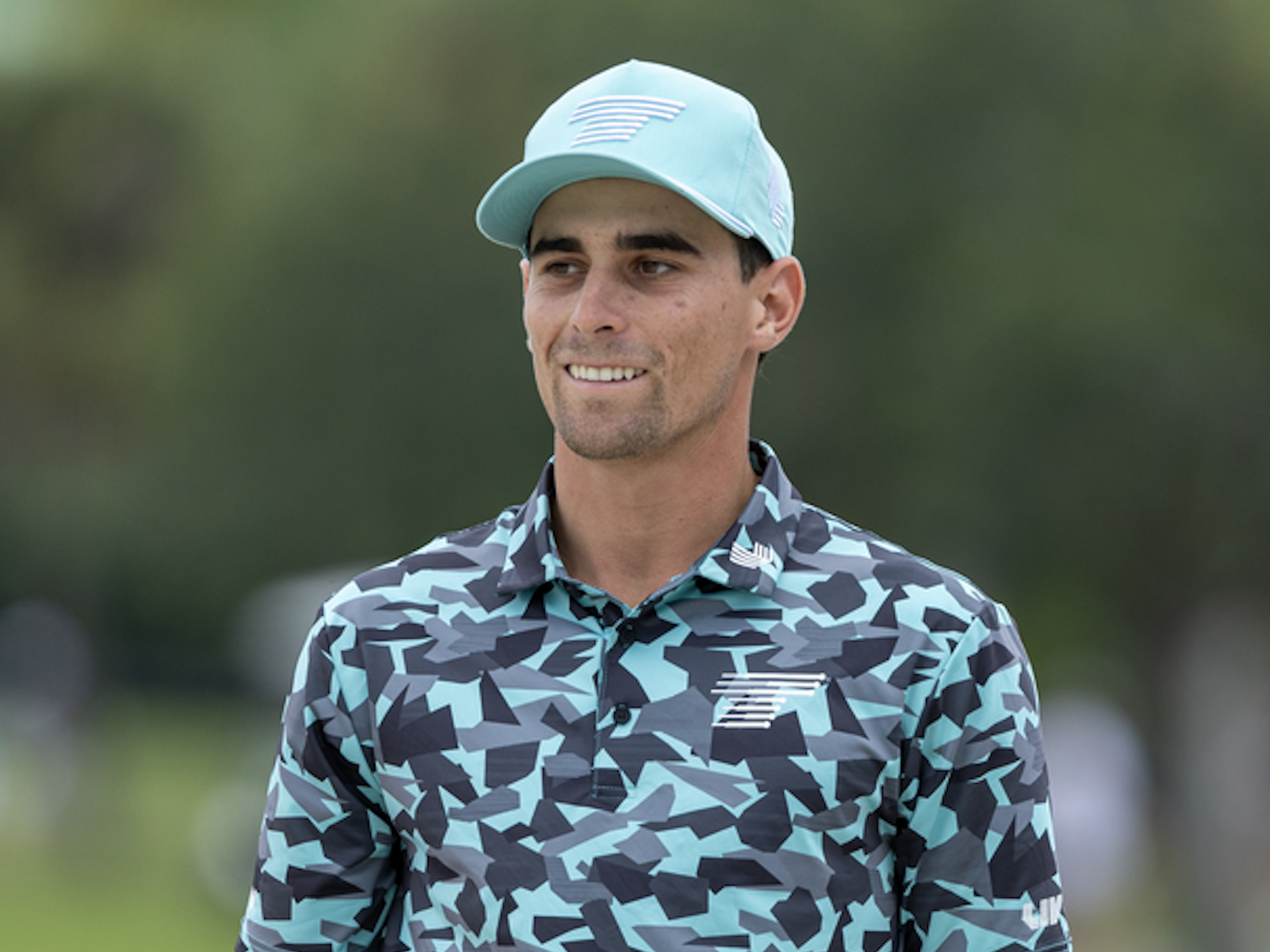
It’s been over nine months since we saw Brian Harman parlay a dominant performance at Royal Liverpool into a claret jug. After another major offseason filled with a feud between the PGA Tour and LIV Golf, talks of a merger, and a multitude of questions regarding the future of the game, the golf world is desperate for all of the best players in the world to come together again for a major championship.
We return to Augusta National with excitement at a fever pitch. Scottie Scheffler has separated himself as the best player in the world heading into the Masters. At the moment, the 27-year-old seems to be an unstoppable force. However, questions about Scheffler’s up-and-down putter once again resurfaced as he missed multiple short putts at the Texas Children’s Houston Open including a 5’11” putt to force a playoff with Stephan Jaeger.
Additionally, a handful of the PGA Tour’s top players such as Justin Thomas, Rory McIlroy, Will Zalatoris, Patrick Cantlay, Tommy Fleetwood and Jordan Spieth make their way to Augusta National with their current form in question.
Plenty of LIV golfers may be up to the task of conquering Augusta, but with so much time in between the last two majors, it’s not always easy to decipher how their games will stack up against Scheffler and co.
Last year, some important changes were made at Augusta National. The par-5 13th (Azalea) was lengthened by 35 yards and now measures 545 yards. Last year, Azalea played as the toughest of the four par 5s, and players averaged 4.74 for the week, which was down from 4.85 in 2022. However, eagles, birdies and bogeys were all up, so the lengthening achieved less pars, which equals more excitement.
Without further ado, let’s get into the course breakdown and analyze some important statistics for Augusta National.
Augusta National is now a 7,510-yard par-72 with lightning-fast Bentgrass greens. The course’s primary defenses are the contoured greens, swirling crosswinds, the topography of the course, which creates uneven lies and the small landing areas that golfers will need to hit to avoid tight run-off areas around the greens.
Past Winners at the Masters
- 2023: Jon Rahm (-12)
- 2022: Scottie Scheffler (-10)
- 2021: Hideki Matsuyama (-10)
- 2020: Dustin Johnson (-20)
- 2019: Tiger Woods (-13)
- 2018: Patrick Reed (-15)
- 2017: Sergio Garcia (-9)
- 2016: Danny Willett (-5)
- 2015: Jordan Spieth (-18)
- 2014: Bubba Watson (-8)
- 2013: Adam Scott (-9)
- 2012: Bubba Watson (-10)
- 2011: Charl Schwartzel (-14)
- 2010: Phil Mickelson (-16)
In this article and going forward, I’ll be using the Rabbit Hole by Betsperts Golf data engine to develop my custom model. If you want to build your own model or check out all of the detailed stats, you can sign up using promo code: MATTVIN for 25% off any subscription package (yearly is best value).
Key Stats For Augusta National
Let’s take a look at the six most important metrics at Augusta National and determine which golfers boast top marks in each category over their last 24 rounds. This should give us a good starting point for building out a betting card.
Strokes Gained: Approach
Approach is historically the most important statistic at Augusta National. The sloping, speedy greens and run-off areas create small landing spots that can be difficult to hit.
Last year, Jon Rahm ranked 6th in the field in Strokes Gained: Approach. Overall, five of the past seven winners at Augusta have ranked in the top 6 in the category. Distance helps, but Augusta National is a second-shot golf course.
Total Strokes Gained: Approach in past 24 rounds:
- Scottie Scheffler (+1.30)
- Corey Conners (+0.99)
- Shane Lowry (+0.88)
- Tony Finau (+0.85)
- Austin Eckroat (+0.85)
Course History
More so than any other course on TOUR, familiarity with Augusta National is crucial. Only one player has ever won the Masters on their first try — Fuzzy Zoeller in 1979. Meanwhile, there are 17 golfers in history who have multiple green jackets.
In most cases, the Masters champion has shown some good form at Augusta in the past. Prior to Scottie Scheffler’s 2022 victory, he finished T19 and T18 in his first two trips to the course. Prior to 2023, Rahm had finished in the top-10 of four of his six starts at The Masters.
Total Strokes Gained: Total at Augusta National in past 36 rounds (per round, minimum eight rounds):
- Will Zalatoris (+2.91)
- Jon Rahm (+2.28)
- Jordan Spieth (+2.22)
- Scottie Scheffler (+2.22)
- Dustin Johnson (+2.01)
- Rory McIlroy (+2.00)
- Hideki Matsuyama (+1.90)
- Justin Rose (+1.85)
- Rickie Fowler (+1.72)
- Russell Henley (+1.60)
Par 4 Scoring Average
Since plenty of players can reach the par 5s at Augusta in two, par-4 scoring becomes more important. The golfer who separates themselves on the par 4s will be able to gain ground on the field.
Par 4 Scoring Average in past 24 rounds:
- Scottie Scheffler (+3.88)
- Chris Kirk (+3.92)
- Jordan Spieth (+3.93)
- Peter Malnati (+3.93)
- Xander Schauffele (+3.93)
Strokes Gained: Around the Green
Golfers with a solid short game tend to fare well at Augusta National. The run-off areas are treacherous, and players will often be scrambling to get up and down.
The majority of players who have won at Augusta National have a great short game and have shown consistent ability to get up and down from tough spots.
Total Strokes Gained: Around the Green in past 24 rounds:
- Hideki Matsuyama (+0.71)
- Scottie Scheffler (+0.66)
- Patrick Reed (+0.61)
- Xander Schauffele (+0.53)
- Lucas Glover (+0.51)
Strokes Gained: Off the Tee
Augusta National is most definitely a second shot golf course. Golfers can get away with a missed fairway here and there, however, it’s important that the misses with driver aren’t too wide of the target or there is serious trouble to be had.
Total Strokes Gained: Off the Tee in past 24 rounds:
- Bryson DeChambeau (+1.04)
- Rory McIlroy (+0.85)
- Scottie Scheffler (+0.84)
- Xander Schauffele (+0.71)
- Ludvig Aberg (+0.68)
Strokes Gained Putting: Fast Bentgrass
The USGA calculates that, on average, the greens at Augusta National are the fastest greens in the country. Three-putting is fairly common at Augusta and golfers must be able to combat the speed of the greens with effective lag putting.
Total Strokes Gained: Putting on Fast Bentgrass in past 24 rounds:
- Justin Rose (+1.43)
- Sahith Theegala (+0.97)
- Min Woo Lee (+0.88)
- Cameron Smith (+0.70)
- Patrick Reed (+0.70)
Statistical Model
Below, I’ve reported overall model rankings using a combination of the six key statistical categories previously discussed.
These rankings are comprised of SG: App (25%); Course History (16%); Par 4 Scoring Average (10%); SG: Putting on Fast Bentgrass (16%); SG: OTT (16%). and SG: ARG (16%).
Last year, Jon Rahm ranked first in this model
- Scottie Scheffler
- Xander Schauffele
- Hideki Matsuyama
- Tony Finau
- Justin Thomas
- Shane Lowry
- Will Zalatoris
- Corey Conners
- Si Woo Kim
- Rory McIlroy
- Stephan Jaeger
- Jordan Spieth
- Chris Kirk
- Keegan Bradley
- Wyndham Clark
- Sahith Theegala
- Russell Henley
- Collin Morikawa
- Matt Fitzpatrick
- Patrick Reed
My 2023 Pick:
Jon Rahm (+950) (FanDuel)
A few months ago, I never thought that I’d be able to say that Rahm would be going slightly under the radar heading into the 2023 Masters. It’s not that Rahm has done anything wrong, but both Scheffler and McIlroy have undoubtedly surpassed him as the scorching hot, super-elite, top of the market betting favorite category.
Since his win at Riviera, the Spaniard has finished 39th at Bay Hill, withdrew at The Players Championship, and failed to get out of the group stage at the WGC Dell Match Play. On the other hand, Scheffler won The PLAYERS Championship and McIlroy finished third at the WGC Dell Match Play.
Rahm has made six starts at The Masters and has come in the top-10 in four of them. The 28-year-old has incredible power off the tee, a requirement at Augusta which always plays longer than the scorecard indicates. He’s also incredible around the greens and ranks third in the field in Strokes Gained: Short Game, which is a combination of around the green play and putting, in his past 24 rounds.
As we’ve seen over the years at The Masters, having the ability to chip and putt your way out of difficult situations is a fundamental aspect of getting it done at Augusta National.
While Scheffler has made a strong case to be viewed as the world’s best player, I still believe that title belongs to Rahm. This will be the year Rahmbo joins the ranks of Seve Ballesteros, José María Olazábal, and Sergio Garcia as natives of Spain to don a green jacket.
2024 The Masters Picks
Brooks Koepka +2500 (DraftKings)
In order to win the 2024 Masters, a player will have to go toe-to-toe with Scottie Scheffler, who’s hitting the ball as anyone in golf over the last two seasons. When building a betting card this week, it’s important for me to choose players that I believe can stare Scheffler down on the weekend at Augusta National. Brooks Koepka fits that bill.
Koepka’s lackluster performance at LIV Miami is concerning, but he’s the type of player who can turn it on quickly during the week of a major championship. Although I’d have preferred, he played well last week, I’ll take the odds discount we got as a result of his most recent results.
Prior to LIV Miami, Koepka appeared to be in solid form. He finished in the top twelve in four of five starts on LIV this season. When it comes to the five-time major champion, it’s well known that he has another gear for major championships. Everything he’s done both in the off-season and during the LIV season is to gear up for the year’s first major at Augusta National.
In his past five starts at Augusta National, the 33-year-old has three top-7 finishes, including two runners-up. The two years when he played poorly (2019 and 2020) were when he was nowhere near 100% healthy. All signs point to Brooks being in a great place physically as we enter major season.
Last year, Koepka was the 36 and 54-hole leader prior to letting the green jacket slip away to Jon Rahm. He used the result as a springboard to win his 5th major at Oak Hill at the PGA Championship.
Brooks enters the week looking to get one step closer to achieving the career grand slam and golf fans would be foolish to rule him out.
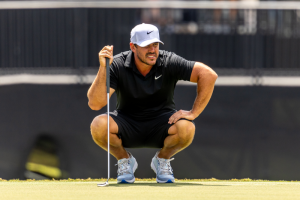
Joaquin Niemann +2800 (BetRivers)
Full disclosure, I bet Niemann the second he was invited to The Masters back in February at +8000. Although the odds have shortened dramatically since then, I can’t pretend that the Chilean isn’t one of the players who has a real chance to win the 2024 Masters.
While I was speaking with Niemann back in March, he told me how much he loves Augusta National.
“Yeah, it’s a place that I love. I’ve been playing good golf. Especially last year, I wasn’t playing my best golf, and I had a good week there and made triple on 11 that kind of killed me a little bit.
I feel like I’m getting more ready and more prepared every time. My game is getting better too. I know that I’m playing good enough to be in that situation that I can have a chance to win the Masters and it’s all about how I react to that situation.
So yeah, I’m going to prepare myself to be ready for that situation if it happens and I can fight for the title on the Sunday which would be awesome.”
As Niemann alluded to, the Chilean was able to have his best career finishes at The Masters (T16) despite not being in the best form. This year, Niemann comes into the week playing better golf than anyone in the world with the exception of Scottie Scheffler. The 25-year-old has won three times since December and has shown the world why he was regarded as one of the games future stars since he was a teenager.
Historically speaking, Joaco’s win at Riviera a few years back seems to be an indicator of potential success at Augusta National. Fourteen players have won at both historic courses including Hideki Matsuyama, Jon Rahm, Phil Mickelson, Dustin Johnson, Nick Faldo, Tom Watson and Ben Hogan.
Niemann has all the shots to be successful at Augusta National. His low stingers will come in handy on plenty of holes down the stretch and he can work it both ways, playing the high draw or the low fade. He also putts best on Bentgrass greens and likes them fast. Whether PGA Tour or LIV, talent will always reign supreme, and I’ll always bet on that talent.

Cameron Smith (+4000) (FanDuel)
Cameron Smith is another player who we should get an odds discount on based off of the results at LIV Miami. Smith was forced to withdraw prior to the second round due to food poisoning. In my opinion, the number has drifted to a place where I’d consider it a “bet the number” play on the talent.
Smith is a contender for the green jacket anytime he tees it up at Augusta National. The Australian absolutely loves the golf course and has four top-10 finishes in his last six trips to the golf course. In both 2020 and 2022, Smith had a real chance of winning The Masters and came up just short, finishing T2 and T3 in those two tries. In his past 36 rounds, he ranks 4th in Strokes Gained: Total per round at Augusta.
In order to be successful at Augusta National, players must be creative around the greens and be shot makers who have plenty of ways to get around the golf course. Cam has all the shots required to be successful at the course at his touch around the greens will continue to serve him well in his hopes for a green jacket.
Smith is arguably the best putter in the world and has the capability to win a golf tournament on and around the greens. He’s already taken down Rory McIlroy at the home of golf on his way to a claret jug and is one of the few players who can stare down any of the world’s top golfers on the back nine at Augusta National.

Justin Thomas +4000 (FanDuel)
With how he’s been playing since his 2022 PGA Championship win, you may be shocked to see the name “Justin Thomas” in this preview. However, JT has drifted to a place on the odds board where I believe it’s worth taking a shot on the talent of a two-time major champion in his prime.
It’s not all bad for Thomas this season. He finished T6 at the signature Pebble Beach event, T12 at the Waste Management Phoenix Open and T12 at the signature Arnold Palmer Invitational. In his last 24 rounds, JT ranks 8th in the field in Strokes Gained: Approach, 14th in Strokes Gained: Around the Green and 29th in Strokes Gained: Putting on fast Bentgrass greens.
Despite missing the cut last season, Thomas has played pretty well at Augusta National. He ranks 13th in Strokes Gained: Total in his past 36 rounds at the course. He finished T4 in 2020, T21 in 2021 and T8 in 2022.
I believe the 2024 edition of The Masters is completely wide open. The past few years has been frustrating for Thomas fans, but I believe his peak form may be a bit closer than people realize.
Sergio Garcia +12000 (FanDuel)
Earlier this season, Garcia dueled with Joaquin Niemann before finally losing on the fourth playoff hole late into the night. Despite the loss, the 44-year-old seemed to gain confidence in his game. The results that followed weren’t spectacular, but in terms of his ball striking he’s shown some flashes of vintage Sergio.
At LIV Miami last week, Garcia played well on a massive golf course, losing in a playoff to Dean Burmester. He continued pumped the ball into the fairway and hit massive iron shot after massive iron shot. He also used a refurbished Scotty Cameron that he used in the 1999 PGA Championship at Medinah. The putter served him incredibly well until he missed a short putt on the 18th hole to win the event. Overall, he gained 7.1 strokes putting at Doral.
Sergio Garcia is once again headed to Augusta National with a chip on his shoulder. Of course, having a chip on the shoulder is nothing new for the fiery Spaniard, but this year, the 2017 Masters Champion will arrive at Augusta with his game clicking on all cylinders.
Sergio winning a second green jacket is seemingly an almost impossible feat, but magical things tend to happen on the hallowed grounds of Augusta National.
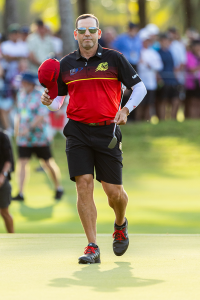
Adam Scott +11000 (FanDuel)
Betting Adam Scott over the past handful of years has been a Masters staple for me, and like many traditions, has been a hard one for me to let go of.
Last week, Scott finished T14 at the Valero Texas Open in a windy and difficult week. I believe the wind will be a major factor this week at Augusta National, and the more difficult the tournament plays, the more I favor Scott. Scott also ranks 5th in his past 24 rounds on Strokes Gained: Putting on Fast Bentgrass and has the short game these days that could help him contend in a major.
Since his win in 2013, Scott’s history at The Masters has been spotty. He has some poor finishes alongside a T9 in 2017 and a T18 in 2019. He’s been playing some solid golf this season, finishing T8 at the Waste Management Phoenix Open and T19 at the Genesis Invitational.
(All photos in piece belong to LIV Golf)
- LIKE19
- LEGIT16
- WOW5
- LOL0
- IDHT0
- FLOP3
- OB0
- SHANK9
Opinion & Analysis
The 22 players who can win the Masters
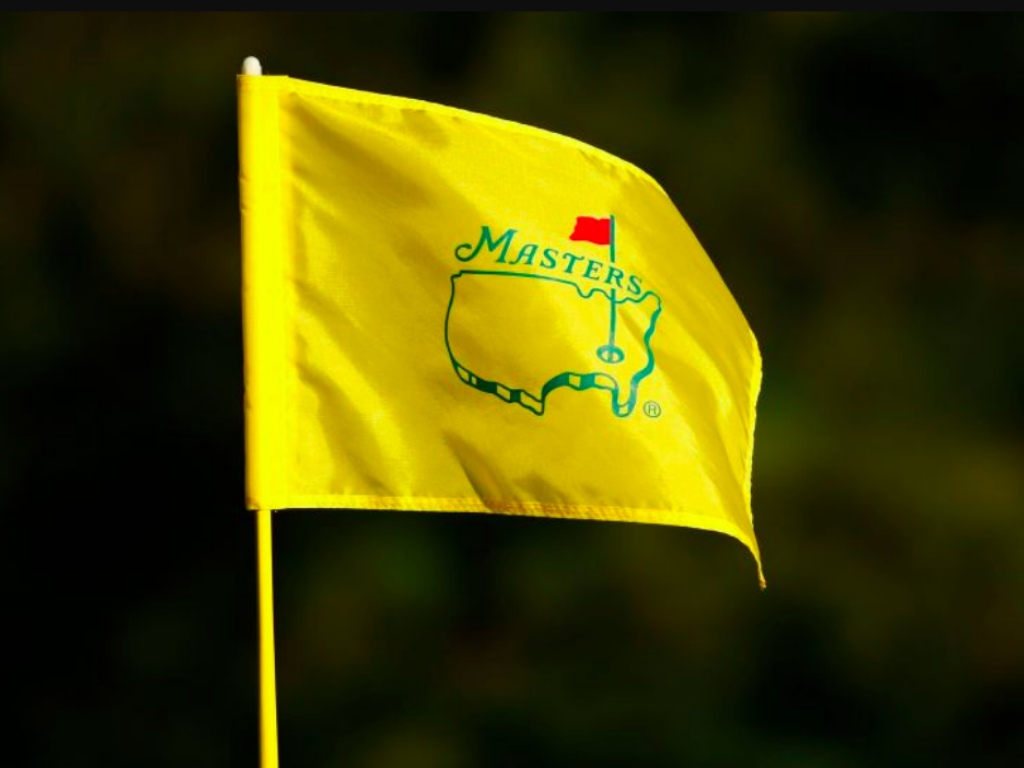
Since 2013, I have created a filtering process to help determine the players who are most likely to win the green jacket based on criteria that have strongly predictive outcomes to success at Augusta. The list of players that can win at Augusta is usually filtered down to 20-24 players and in that time I have correctly shortlisted every Masters champion.
This includes last year’s winner, Jon Rahm. Even though Rahm essentially walked away with the green jack and did not make it very close, there were some close calls on top of the leaderboard as I had filtered out Phil Mickelson (t-2nd) and Patrick Reed (t-4th) as the LIV Tour is still behind on providing advanced analytics for their tour. Russell Henley was also filtered out and finished t-4th, five strokes from Rahm’s winning score of 276.
If you’re watching at home, the “critical holes” that will likely determine the top finishers will be holes No. 7, 8, 11 and 13. The 11th hole is projected to be the most critical of holes as over the past five Masters the top players have gained nearly a 1.5 strokes for the tournament on that hole alone.
Just like last year’s column I will get the LIV Tour players I’ve filtered out of the way. Since LIV Tour does not provide ShotLink or Trackman data, it’s more of a guessing game as to how certain LIV Tour golfers are playing. I did utilize recent performance as well as performance at Mayakoba and Doral as they were two former PGA Tour courses that have some semblance of crossover to playing Augusta.
Phil Mickelson
Thorbjorn Olesen
Charl Schwartzel
Cameron Smith
Bubba Watson
Admittedly Cameron Smith and Phil Mickelson are hard to leave out, but both have not played well as of late.
Next, I filtered out the amateurs and all first-time professional attendees. The Masters has only been won three times by a first-time attendee: Fuzzy Zoeller was the last to win in 1979. Prior to Zoeller though, it was Horton Smith in the inaugural event in 1934 followed by Gene Sarazen in 1935
Ludvig Aberg
Akshay Bhatia
Wyndham Clark
Eric Cole
Santiago de la Fuente (a)
Nick Dunlap
Austin Eckroat
Stewart Hagestad (a)
Ryo Hisatsune
Lee Hodges
Nicolai Hojgaard
Stephan Jaeger
Jake Knapp
Christo Lamprecht (a)
Peter Malnati
Denny McCarthy
Grayson Murray
Matthieu Pavon
Adam Schenk
Neal Shipley (a)
Jasper Stubbs (a)
Out of the first time invitees the data likes Ludvig Aberg and Eric Cole to play the best at Augusta National.
I also filter out old Masters champions that I do not believe can get into contention anymore.
Fred Couples
Jose Maria Olazabal
Vijay Singh
Mike Weir
Tiger Woods
Recency has a strong predictive value for player performance and missing the cut in the event in the prior week greatly reduces the likelihood of winning the following week compared to players that miss the cut, take a week off, and then play the following week. Therefore I filter out all players that missed the cut at the Valero Texas Open last week.
Byeong Hun An
Harris English
Rickie Fowler
Ryan Fox
Zach Johnson
Tom Kim
Erik van Rooyen
Camilo Villegas
I will also filter out the players that have never made the cut at the Masters:
Kurt Kitayama
Adrian Meronk
A Tradition Unlike Any Other…
Augusta National has traditionally favored longer hitters and even moreso in the past 20 years of the event. Of course there has been exceptions as in 2007 the short hitting Zach Johnson ended up winning the event.
Critics of my filtering system point out Johnson’s victory as a case for short hitters being able to win at Augusta, but they neglect the fact that Johnson’s victory came in historically low temperatures in the 40’s with wind gusts reaching 35 mph. That made the par-5’s almost unreachable in two shots and the course stressed wedge play and short game around the green where Zach had a sizable advantage.
It is projected to rain early on Thursday and then the weather is supposed to be sunny and warm for the rest of the week. It depends on how quickly the course dries up, but if it does dry out fairly quickly that will give the longer hitters the advantage as they will be able to reach certain par-5’s in two shots that the shorter hitters cannot reach if they don’t hit a quality tee shot and there may be par-5’s that some of the long hitters can reach in two shots with a short iron. Therefore I will filter out the following players due to a lack of distance off the tee:
Corey Conners
Lucas Glover
Emiliano Grillo
Brian Harman
Si Woo Kim
Chris Kirk
Shane Lowry
Colin Morikawa
JT Poston
Justin Rose
Sepp Straka
Out of these players the data likes Lowry and Morikawa the most. Both have good history at Augusta and they both just narrowly missed the distance benchmark set in the filter and both are excellent long iron players.
Last year I created a new formula to better determine ball height as Augusta has historically not taken too kindly to a low ball flight. Out of the 5 players filtered out for low ball flight using the new formula the best finish was only t-29th by Si Woo Kim. This year I’ve filtered out the following players.
Matthew Fitzpatrick
Sungjae Im
Luke List
Joaquin Niemann
Justin Thomas
Every year I filter out the poor performers on approach shots from 175-225 yards as Augusta National puts a lot of stress on those shots. Last year I filtered out nine players and three of them missed the cut with only Jordan Spieth finishing in the top-15 (t-4th) as the rest of the players were never a threat.
Here are the golfers I’m filtering out due to poor play from 175-225 yards:
Patrick Cantlay
Cameron Davis
Jason Day
Tommy Fleetwood
Russell Henley
Max Homa
Rory McIlroy
Jordan Spieth
Nick Taylor
Rory had a nice outing at the Valero Texas Open and hit his irons better there, but appears to be struggling with a leftward miss. Other than that, Rory still has the game to win his first green jacket. Henley is usually one of the better iron players on Tour, but he has struggled this season from 175-225 yards and is a short hitter anyway.
I will also filter out Danny Willett as he is coming off injury and making his comeback at the Masters.
That leaves the 22 players that can win the Masters:
Keegan Bradley (150/1)
Sam Burns (60/1)
Bryson DeChambeau (25/1)
Tony Finau (50/1)
Sergio Garcia (100/1)
Adam Hadwin (175/1)
Tyrrell Hatton (80/1)
Viktor Hovland (35/1)
Dustin Johnson (40/1)
Brooks Koepka (16/1)
Min Woo Lee (70/1)
Hideki Matsuyama (20/1)
Taylor Moore (300/1)
Jon Rahm (12/1)
Patrick Reed (80/1)
Xander Schauffele (18/1)
Scottie Scheffler (4/1)
Adam Scott (100/1)
Sahith Theegala (50/1)
Gary Woodland (250/1)
Cameron Young (50/1)
Will Zalatoris (35/1)
Here’s my personal top-10 picks:
Keegan Bradley (150/1)
Sam Burns (60/1)
Bryson DeChambeau (35/1)
Tony Finau (50/1)
Viktor Hovland (35/1)
Dustin Johnson (40/1)
Hideki Matsuyama (20/1)
Jon Rahm (12/1)
Xander Schauffele (18/1)
Scottie Scheffler (4/1)
- LIKE63
- LEGIT35
- WOW10
- LOL11
- IDHT2
- FLOP3
- OB2
- SHANK27
News
7 PGA TOUR courses you need to play

Golf is a unique sport in that you can play where the pros play and make golf history of your own. Nothing in golf can compare to playing a world-renowned course and following in the footsteps of the game’s best golfers. The feeling is incomparable, and it’s one we think more golfers should experience!
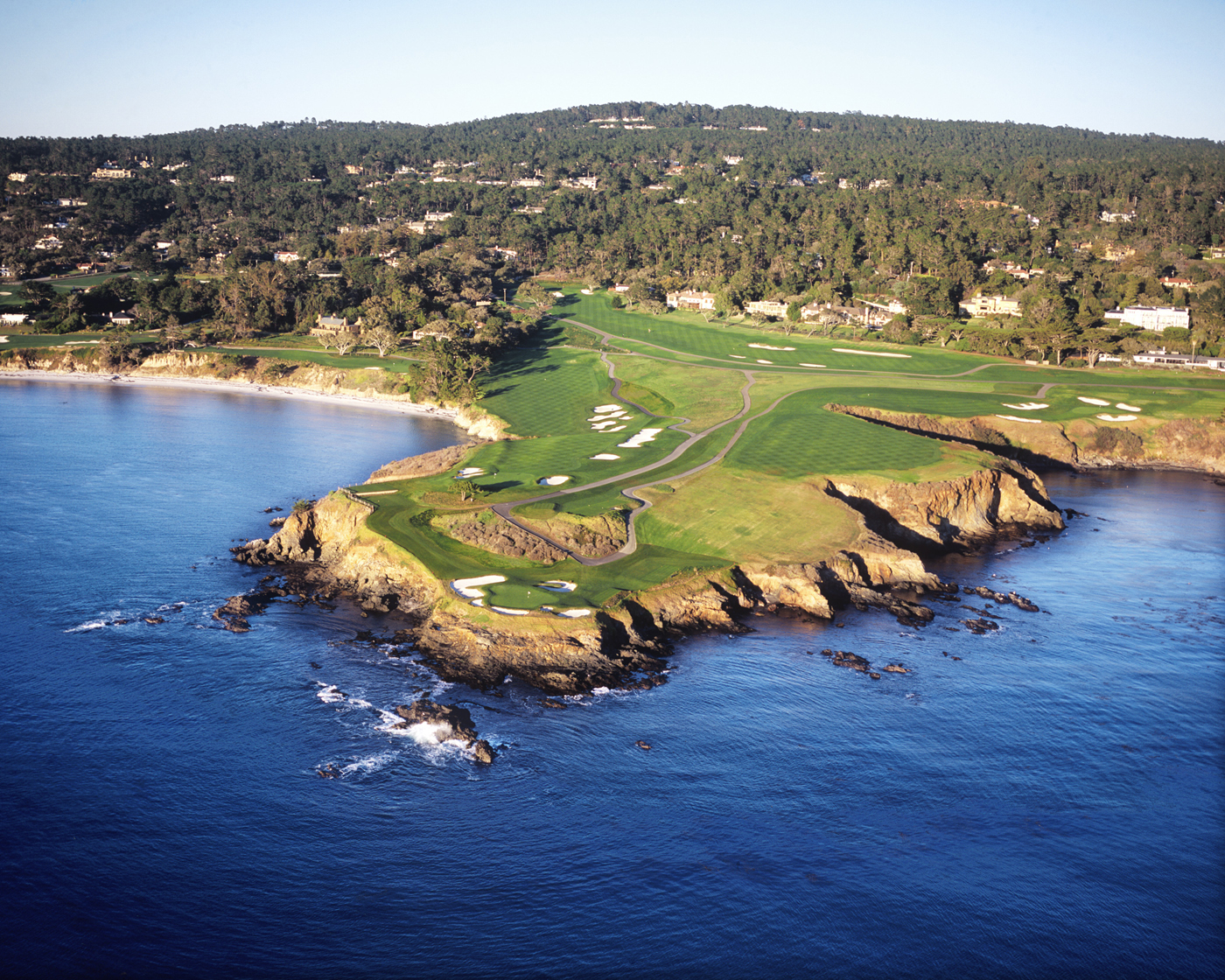
To get you started, here are our picks of the best PGA TOUR courses you can (and should!) play:
PGA Tour courses you can (and should) play
- Pebble Beach
- TPC Sawgrass – Stadium Course
- Arnold Palmer’s Bay Hill
- Torrey Pines – South
- Harbour Town
- PGA National – Champion
- Innisbrook Resort – Copperhead
Pebble Beach Golf Links (AT&T Pro-Am, U.S. Open, PGA Championship)
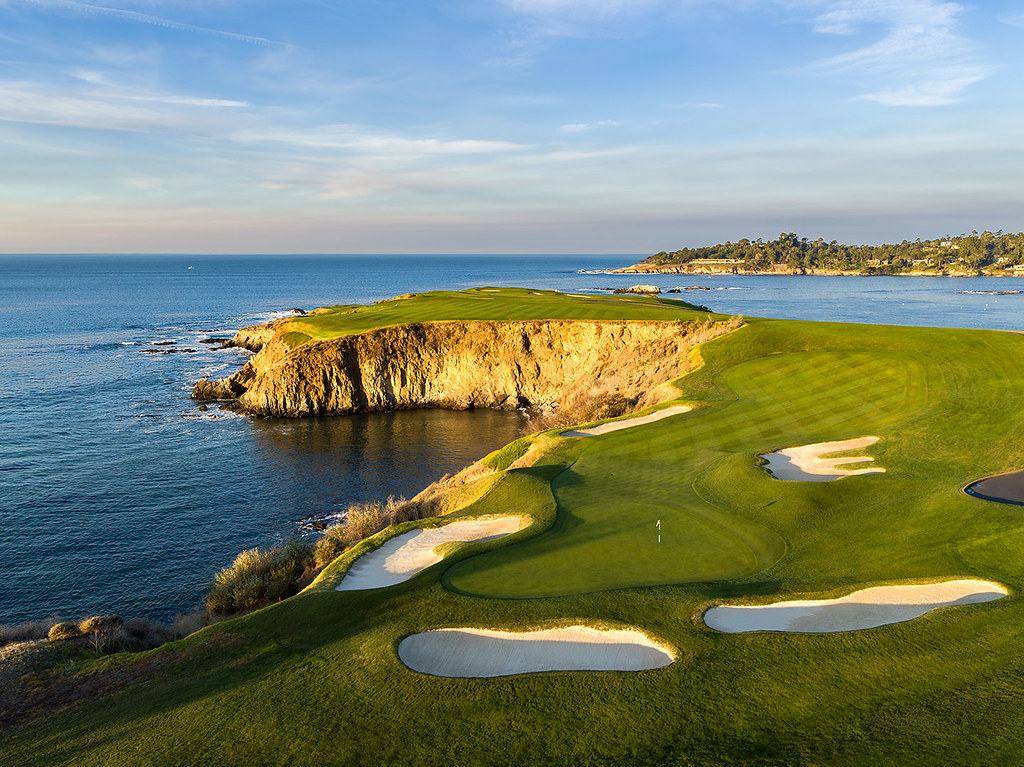
Early morning light on the par-4 8th hole at Pebble Beach Golf Links on the Monterey Peninsula.
One of the most recognizable golf courses in the world, Pebble Beach Golf Links is the definition of a bucket golf course. Golfers will play iconic holes like the par-3 7th to the stunning par-5 18th. Enjoy great views of the Pacific Ocean as you play amongst the clifftop fairways and make memories that will last a lifetime when you play this PGA TOUR and major championship course.
TPC Sawgrass – Stadium Course (THE PLAYERS Championship)
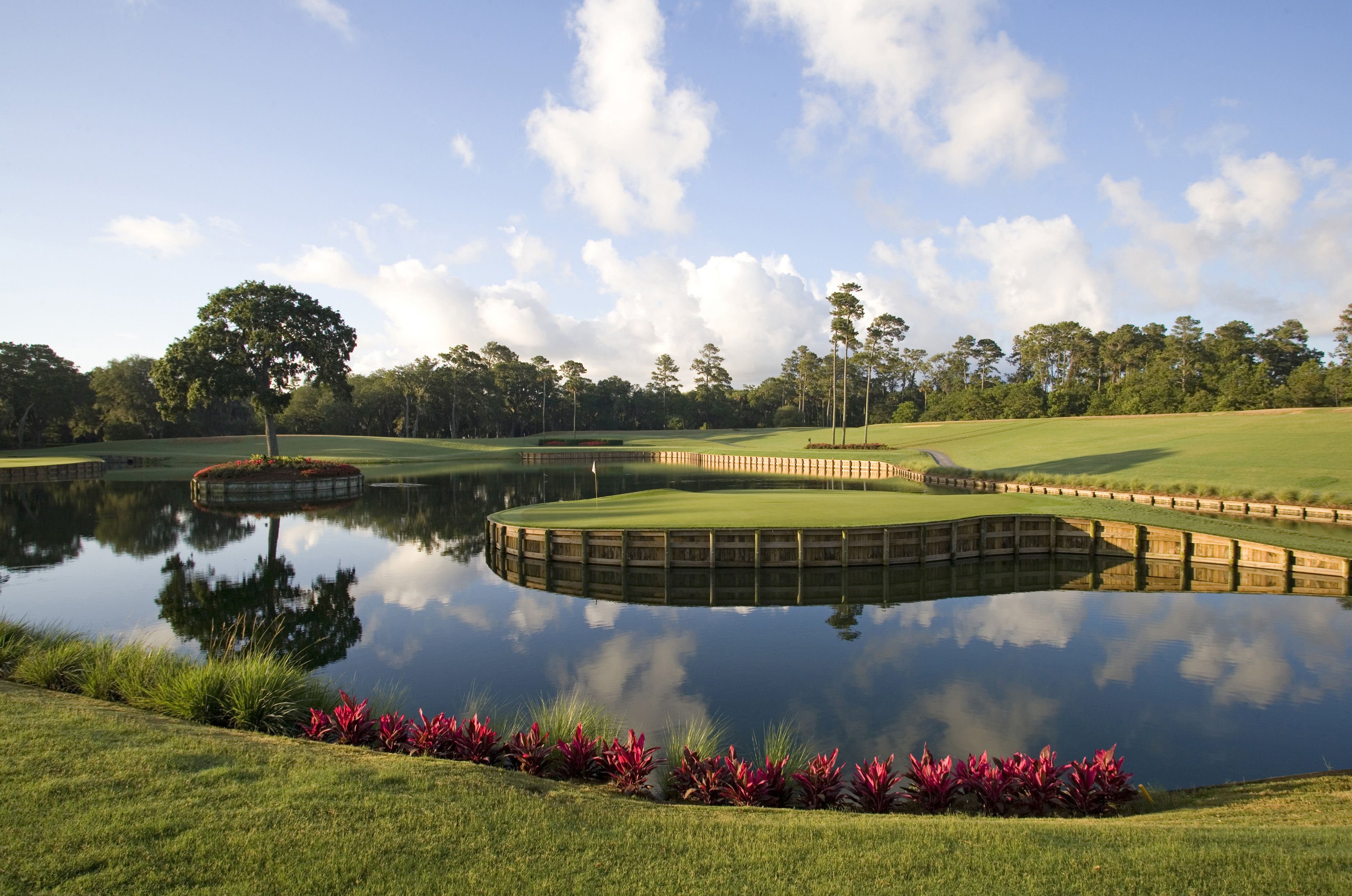
The 17th hole of THE PLAYERS Stadium Course at the TPC Sawgrass in Ponte Vedra Beach, FL Photo by: Chris Condon/PGA TOUR (Photo by Chris Condon/PGA)
Home to arguably the most famous par 3 in golf, the Stadium Course at TPC Sawgrass is a top bucket-list course designed by Pete and Alice Dye. A challenging layout awaits that will test all facets of your game, especially shot shaping and course management. Subtle elevation changes, undulating greens, and unique bunkering add a degree of difficulty that stump even the best players in the world. Not to mention one of the best finishing stretches in golf with the long par-5 16th, the iconic 17th hole island green, and the testy par-4 18th.
Arnold Palmer’s Bay Hill (Arnold Palmer Invitational)
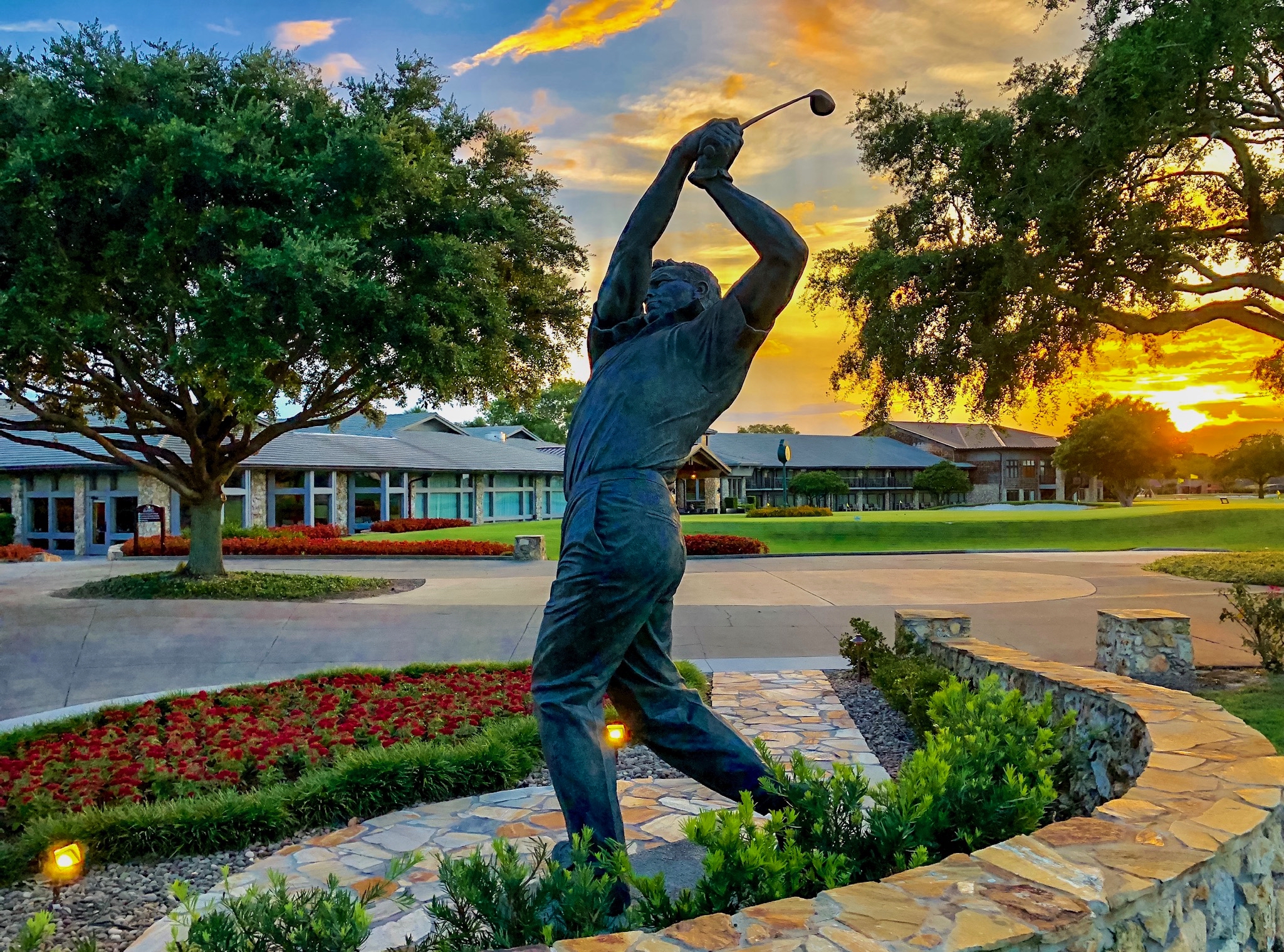
A course fit for “The King” is what you will experience when you visit Orlando and play Bay Hill’s Championship Course. This classic Florida layout offers generous landing areas off the tee with few trees, but bunkers guard the greens and large ponds will make you rethink your shot choices. The course is only available for members and guests staying at The Lodge, so a stay is required to play this stunning course. But with year-round sunshine and pristine course conditions, it is never a bad time to visit Bay Hill!
Torrey Pines – South (Farmers Insurance Open, U.S. Open)
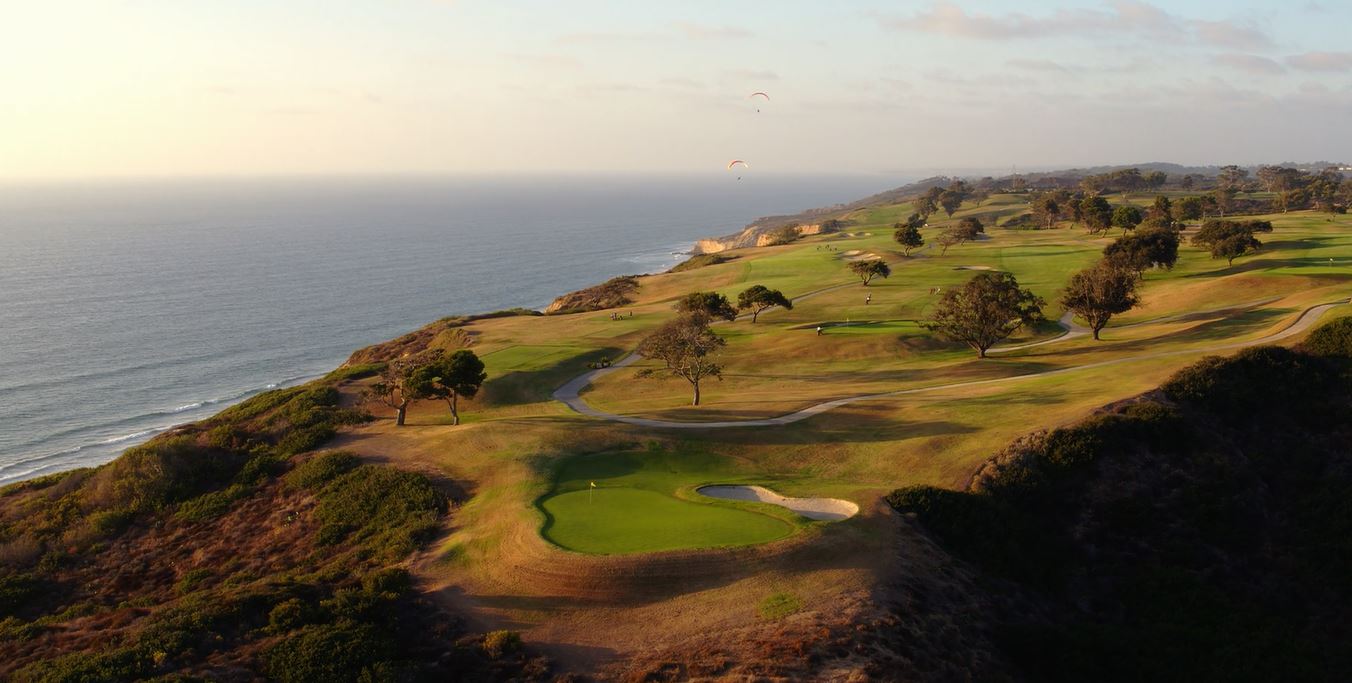
Another California clifftop course that should be on your bucket list is the South Course at Torrey Pines. Located just north of San Diego, this annual PGA TOUR stop has also hosted two U.S. Opens, which adds to the allure of the property. Narrow fairways and tall rough combined with amazing views of the Pacific Ocean and the California coastline make for an unforgettable round of golf. Large bunkers and elevation changes add to the challenge of the course, but the moderately sized greens offer golfers some respite. Who would’ve thought that a municipal course could be so exciting?

Hole 18 Harbour Town
Most recognized by the famous red and white striped lighthouse behind the 18th green, Harbour Town is the brainchild of Pete Dye and Jack Nicklaus on Hilton Head Island, South Carolina. While the course is relatively short for a PGA TOUR event, the challenging design offsets length for accuracy with the narrow fairways framed by overhanging trees making it a shot makers course. A majority of the course winds through the wooded and sandy terrain before looping back towards the coastline with the final two finishing holes playing along the water.
PGA National – Champion Course (Honda Classic, Ryder Cup, PGA Championship)
With the prominent golf tournaments this course has held, it is hard to leave it off the list. A fantastic Jack Nicklaus design, the Champions Course at PGA National is also home to a famous stretch of golf holes called “The Bear Trap.” The fairways and greens are player-friendly while the bunkers and water hazards are the course’s biggest defense. You will enjoy a 5-star experience and feel like a professional when you visit PGA National’s Champion Course.
Innisbrook Resort – Copperhead Course (Valspar Championship)
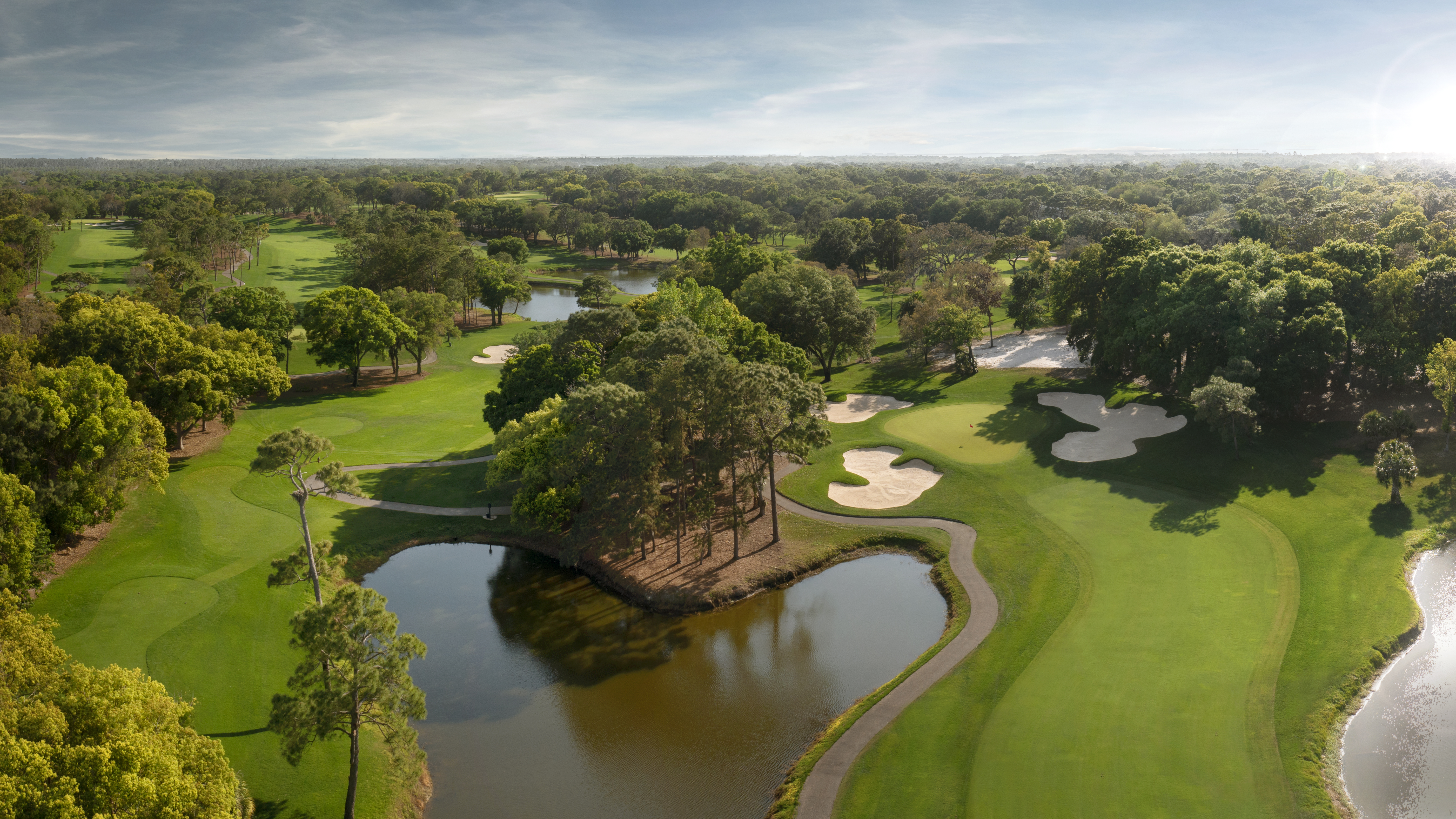
At more than 7,200 yards the Copperhead Course is the most recognizable of Innisbrook’s four Tampa, Florida courses and plays host to the PGA TOUR’s Valspar Championship.
One of the more under-the-radar courses on Tour, the Copperhead Course at Innisbrook Resort still offers a challenge even to the pros. Designed by Lawrence Packard, the course, while not heavily wooded, requires accuracy with tight fairways, strategically placed bunkers, especially around the greens, and a decent amount of water hazards that come into play. As you head towards the clubhouse, you will encounter “The Snake Pit;” a collection of the most difficult finishing holes on the PGA TOUR.
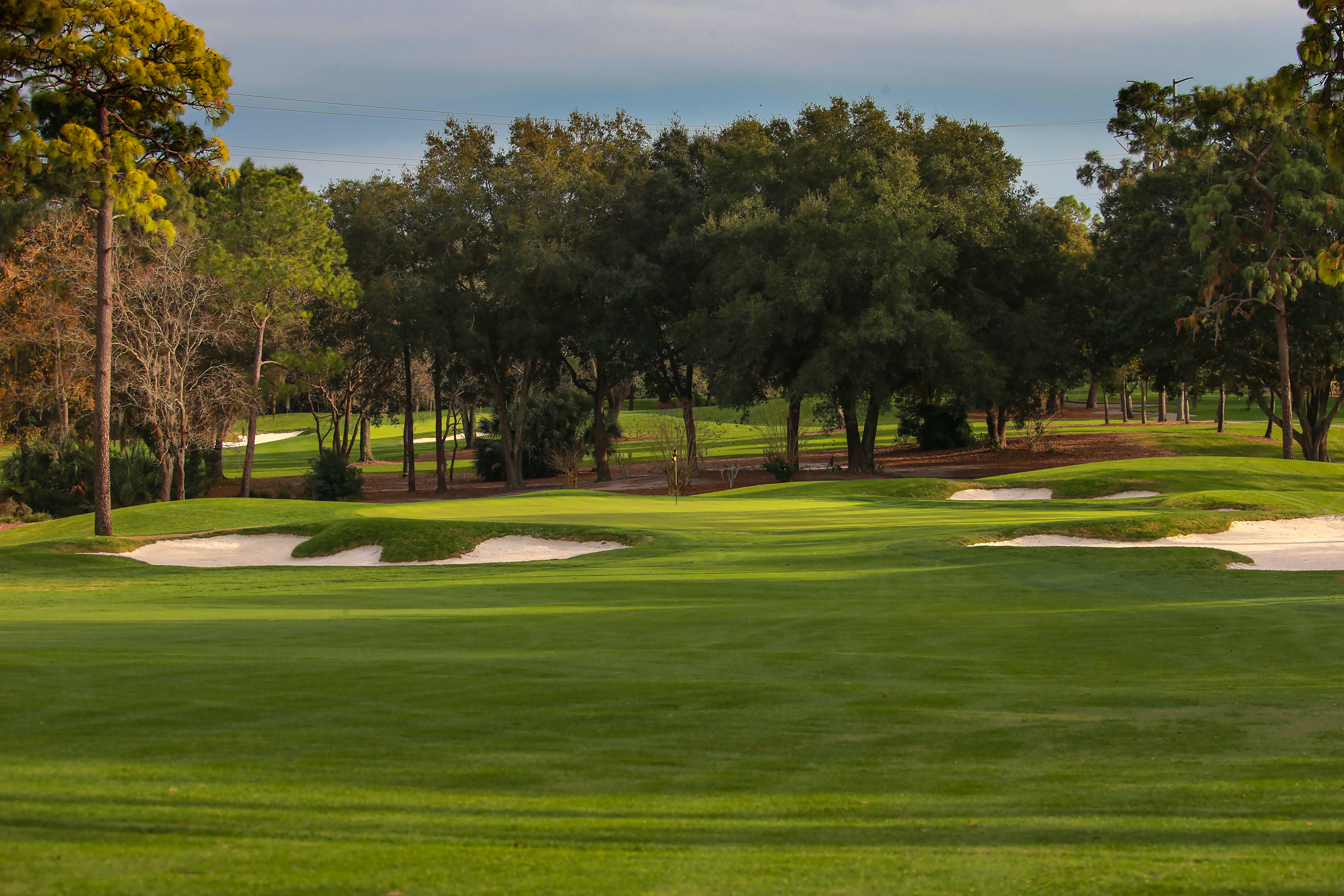
There you have it, GolfWRXers. Have you played any of these PGA TOUR tracks? What was your experience? Let us know in the comments.
Editor’s note: This article is presented in partnership with Golfbreaks. When you make a purchase through links in this article, GolfWRX may earn an affiliate commission.
- LIKE7
- LEGIT2
- WOW0
- LOL1
- IDHT0
- FLOP0
- OB0
- SHANK1
-

 19th Hole2 weeks ago
19th Hole2 weeks agoJohn Daly stuns fans into silence with brutal opening tee shot on PGA Tour Champions
-

 19th Hole1 week ago
19th Hole1 week agoThings got heated at the Houston Open between Tony Finau and Alejandro Tosti. Here’s why
-

 19th Hole5 days ago
19th Hole5 days agoReport: Tiger Woods has ‘eliminated sex’ in preparation for the 2024 Masters
-

 19th Hole3 weeks ago
19th Hole3 weeks ago2-time major champ announces shock retirement from the sport at age of 33
-

 19th Hole3 weeks ago
19th Hole3 weeks agoEdoardo Molinari reveals the latest PGA Tour golfer to turn down ‘good offer’ from LIV Golf
-

 19th Hole2 weeks ago
19th Hole2 weeks agoCharlie Woods finds it tough going on American Junior Golf Association debut
-

 19th Hole7 days ago
19th Hole7 days agoAddiction, spinal fusion, and scam artists – Everything Anthony Kim revealed in candid interview with David Feherty
-

 19th Hole3 weeks ago
19th Hole3 weeks agoJon Rahm dealt fresh blow to hopes of qualifying for 2025 Ryder Cup






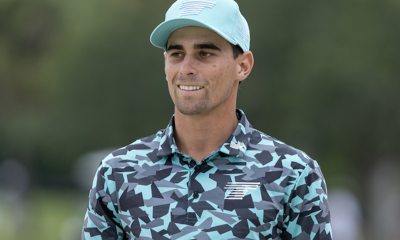

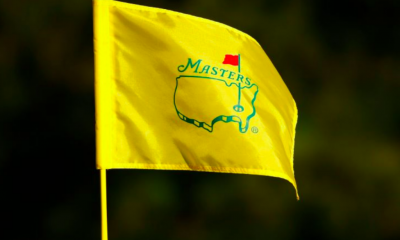



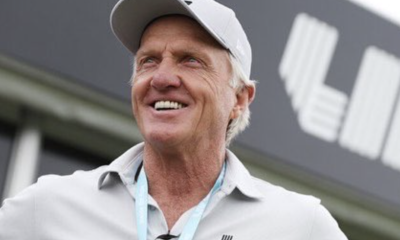

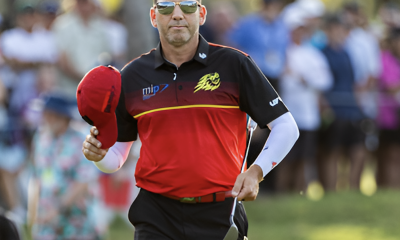













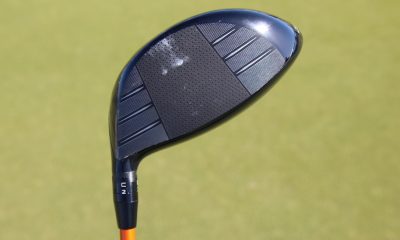



GolfCodeWeekly.com
Dec 8, 2017 at 1:25 pm
Yup the increases in the last 10 to 15 years are almost nil, i really do not get the problem, golf is fine, the ball is fine
HDTVMAN
Dec 8, 2017 at 11:49 am
When I play, the ball doesn’t go both far enough & straight enough! I’d also like to see a chip which incorporates my watch to find the ball when it goes anywhere but the fairway, which it tends to do!
Rich
Dec 8, 2017 at 11:04 am
Let the Ball fly.. I like distance and to see it fly far is exciting.. The course design should be made narrower deeper ruff more trees and sandtraps and more water . Make it more of a gambler course.I don’t like these -21 under scores .What ever happened to these under -10 course score total for the event? That’s why most people love the OPEN (US,British) because they are low scoring and a test of the skill of a player to play the course where does the risk worth the reward ! The tougher the better with some RISK/REWARD when ever available . I like to see the distance but also I want to see accuracy with the yardage.
Mark
Dec 8, 2017 at 8:59 am
The most interesting part of this to me is the distance gains prior to the introduction of the Pro V1. Looking at the chart it appears there is about a 20 yard gain from 93-00. There is another increase after the introduction of the Pro V1. To me this speaks to the complexity of the distance discussion. It can’t be reduced to only the ball. There are a lot of other factors involved.
Think about how much more advanced we are in all the different areas like driver tech, shafts, athletics and power generation, biomechanics, launch conditions, etc. Sure rolling the ball back could reduce median distance, but it’s far from the only factor.
RJM
Dec 7, 2017 at 9:23 pm
They have also talked about lowering the speeds in auto racing (granted, for primarily safety reasons) but how many fans would the sport lose, say, for the Indy 500, if the top speeds were limited to 180 or 200. People go to golf tournaments to watch PGA players hit the snot out of a golf ball. Knowing that DJ, Jason, or Rickie is somehow going to be “limited” off the tee or from the fairway takes a boatload of interest out of the game.
jeff
Dec 7, 2017 at 8:30 pm
#Whocares?
The longest hitters aren’t the only ones winning…
Sounds like a bunch of old codgers irritated their old antiquated records could one day be broken, and the golf channel stirring up something to talk about during the off months. Get over it. The game SHOULD be made easier, not harder, want the game to stick around a while longer and grow? Although data shows its hardly been made easier…. The game needs to progress, I understand keeping the integrity of the game, but there is a fine line of overdoing that to the point of people just saying “forget it, golf is too hard, too expensive, and way to much trouble to deal with, i just want to have fun with my buddies”
The tour players are better athletes now, the equipment is better, the ball is better, the courses are longer, firmer, and harder faster greens. Swings technique is better, availability to data and what ACTUALLY makes the ball go further or roll longer is easier to get and more readily available. It all adds up to hitting the ball further. Again, why is this a bad thing? To say they used to be hitting 3-4 irons and now wedges? Thats not a diff of 33 yards, its a diff of 100 yards. 33 yards is a 1-2 clubs max. Not to mention todays “5” iron is actually a 3 or 4 iron loft of old… its like the 30 handicapper saying he hit is 8iron 180 yards, well maybe? But more then likely its actually a juiced up 5-6 iron… but who cares? Ain’t no tour pro hitting a wedge in from 215 yards when he used to have to use a 3 wood from 250 because of a ball.
I sure hope the people complaining about the ball going to far and the game becoming too easy, are the same people still riding a horse to work, and going to the haberdashery to get a new button for their will jacket they made themselves… They better not be using Amazon, or Nordstrom.com to buy their suits…. You all better not be using any form of technology to make things easier and better.
Get over it, it doesn’t matter, the game is hard enough. Every sport progresses, the athletes become stronger, faster, smarter. Its called evolution, and with out it, the game dies.
Carl
Dec 7, 2017 at 8:03 pm
It seems like many people are opposed to the ball going too far because it benefits the longer hitters. But restricting the ball isn’t going to take that advantage away. If anything, they will still be hitting mid-long irons where shorter players will be hitting hybrids or woods.
To me, the underlying problem for many people calling for ball rollbacks is that they don’t see length as equivalent skill-wise to a great short game or solid putting. I’m not sure why though because the tolerances for mis-hits and clubface to club-path are smaller when you are swinging at higher speeds. There is inherently skill involved to hit it long AND straight, just as there is skill involved in bunker shots or putting.
henry
Dec 9, 2017 at 11:55 pm
this is spot on. should Rickie or Jordan be penalized bc they putt too well? Distance is a skill. Let the ones who can hit it far keep it that way. And the funny thing is, DJs skill would be even more celebrated bc hed be hitting 7 irons while other guys are hitting 5 woods.
Terry Medlar
Dec 7, 2017 at 7:40 pm
I’m not really concerned about the distance the pros are hitting, but if you want to make a change, instead of changing/restricting the ball, why not just tell the pros they can’t use their drivers?
Jon
Dec 7, 2017 at 3:29 pm
Much ado about nothing.
Prime21
Dec 7, 2017 at 3:28 pm
Cigarettes & Alcohol have killed people for a long time, but they still exist. $ is the answer you are looking for, plain & simple.
Antoine Steeghs
Dec 7, 2017 at 2:56 pm
I think youcanlook at the masters. What clubs are used to the green? Are the using 4 irons 40 years ago and now 8 irons?
chinchbugs
Dec 7, 2017 at 2:40 pm
Can you make a shoe stink?
Genuine question…
Uhit
Dec 7, 2017 at 2:34 pm
…and you have to remember, that driving distance is in this case carry and roll.
Latter is strongly correlated to the course conditions and setup – fast and firm fairways.
The recorded carry distances show no increase in distance since more than a decade.
CB
Dec 7, 2017 at 1:14 pm
It’s not that the ball goes too far – it goes too straight. Because they have been designed so well aerodynamically, they tend to not bend as much as the old Balata and wound type balls – which is what Johnny Miller has been saying, as opposed to just calling out the problem of the ball flying too far. With forgiving heads and forgiving balls – the modern players are getting away with a lot of mis-hits that the old ball would not do as well, that you had to be a much better ball striker back then. But this current ball technology is part and parcel of all this tech of heads, shafts and balls, and to talk about rolling it back now, after Eldrick made all his money and success during his career from 2000 on – with the very balls that he wants repealed – is a joke.
Hunter Brown
Dec 7, 2017 at 1:38 pm
Great point here and I agree with you to a point however if it were a problem I think we would see scoring average dramatically drop. If you look at swimming when the “shark suit” was introduced 49 world records were broken in 18 months. This is a dramatic drop and why they are now banned. We have not yet seen that kind of drop in scoring avg or records to suggest a ban is needed in my opinion
Andrew Cooper
Dec 7, 2017 at 2:15 pm
I agree 100%, how much straighter the new equipment goes is every bit as important. This is rarely spoken about. Courses have been lengthened proportionately with the new equipment, but have they been tightened up proportionately? I would imagine with measuring technology we could get a fairly good number on how much straighter the ball flies now. And let’s say we find it’s around 10% straighter (to pick a number) then bring in tour fairways by a similar amount.
Barry Martin
Dec 7, 2017 at 12:52 pm
Yes, we are about 15 years too late, but there were guys – like Nicklaus, Geoff Shackelford, etc. – who were calling it out back then. But there were a chorus of people, led by Uncle Wally at Titleist who said “Nothing to see here kids, everything’s fine, stop whining.”
https://en.wikipedia.org/wiki/Boiling_frog
Hunter Brown
Dec 7, 2017 at 1:41 pm
You are definitely right I remember Nicklaus talking about this a long time ago and that was kind of my point that it has always been a topic of conversation and why the USGA puts limits on how much it can improve. If we really do want to take away distance on the PGA Tour I think there is a lot easier and more simple way to do it. Just take away the tee. It would force players to use higher lofted “drivers” and would take away the advantage of hitting up on it. Now the unfortunate part about most of these solutions is that it will actually give the longer hitters even more of an advantage
Greg V
Dec 7, 2017 at 12:09 pm
Hunter, you stated that there has never been a ball roll-back, but you are mistaken.
For 1931, the USGA reduced the maximum weight of the ball from 1.62 ounces to 1.55 ounces. The players didn’t like it, as the ball didn’t go as far, and it was more affected by wind. They called it the ‘floater.”
It might be time to look at a reduction in the weight of the ball again, as today’s ball and club technology afford much more control in the wind. If the USGA could roll back the ball in 1931, they can certainly do it again soon to keep course lengths for elite golfers from approaching 8,000 yards.
Hunter Brown
Dec 7, 2017 at 1:35 pm
Thanks Greg I was unaware of this for sure so I appreciate you pointing it out. However it seems as though it only lasted a year so I would still contend the ball won out. Also what are your hindrances to 8,000 yard courses for pros? Also I have seen plenty of “shorter” courses hold the test of the pros. See Oakmont, Merion, Riviera, Shinnecock, etc. All of those cut lines in US Opens were significantly over par.
Andrew Cooper
Dec 7, 2017 at 11:55 am
Good work Hunter. The stats show that the limits on balls and clubs have worked since the early 2000s, so it’s strange to be having this debate now. An unspectacular 3.5 paces forward over the last 15 years-not what the industry would want the golfing public to know maybe, but there it is. So if the rules are working why change?
dat
Dec 7, 2017 at 11:44 am
I think it goes too far, and nothing can be done to stop it. If in 15 years the ball goes 15 yards further, that will continue to make the game less exciting to watch. Driver, wedge into every hole is just boring.
Drew Boggs
Dec 7, 2017 at 11:26 am
You can make great short par 4s like everyone wants to see and just make them absolutely brutal. Risk/Reward holes get the most attention out of any course or PGA Tour venue. Example, #10 at Riviera. Arguably the greatest short par 4 on tour, and everyone watches it. If you roll back the ball, you are hurting the game of golf. Juniors will not be as involved, and everyone wants and chases the 300+ yard drives. It’s our game today and what it will continue to be.
Bob Jacobs
Dec 7, 2017 at 11:05 am
I think we need 10 more articles on ball go too far!!